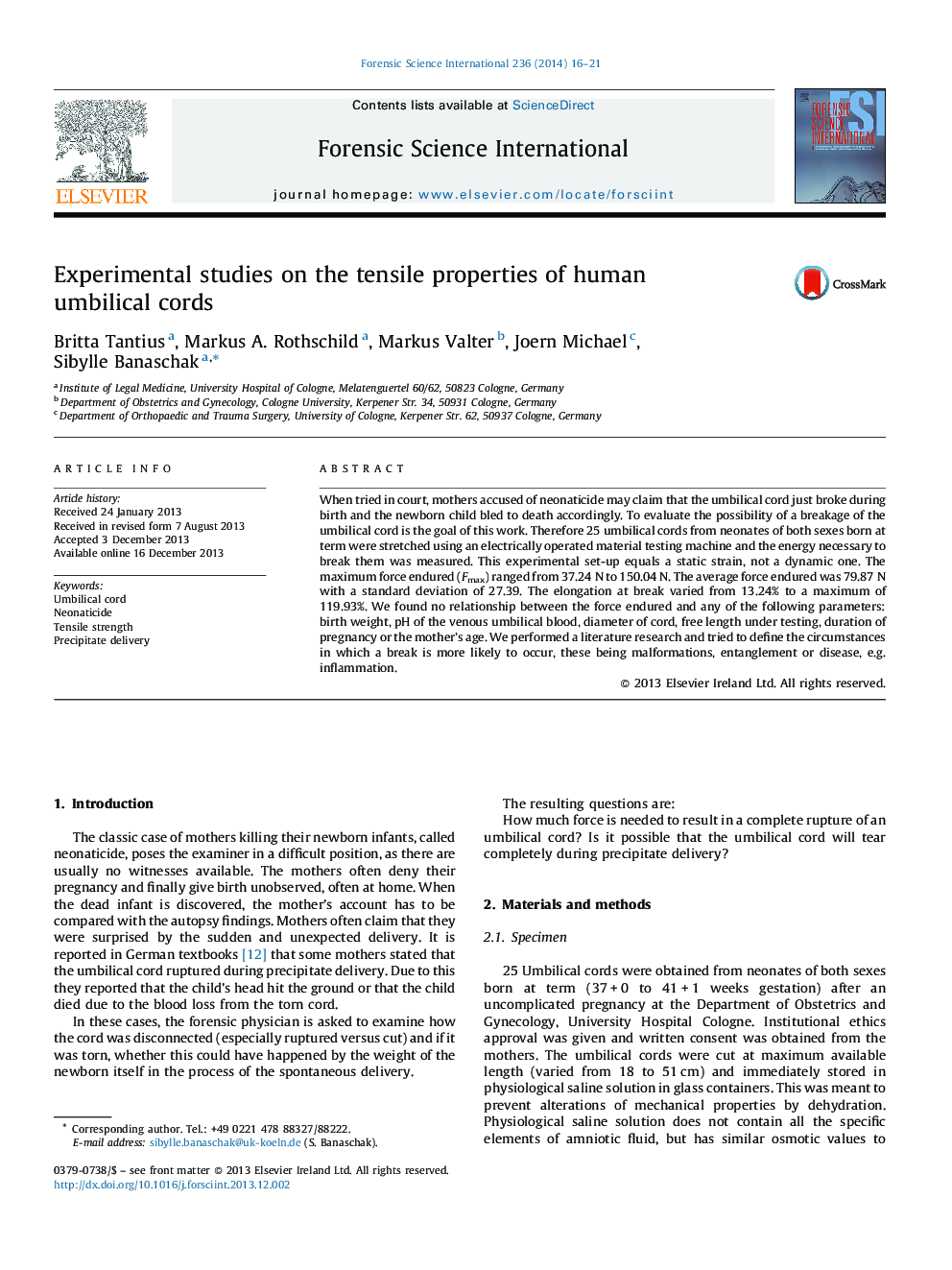| Article ID | Journal | Published Year | Pages | File Type |
|---|---|---|---|---|
| 95606 | Forensic Science International | 2014 | 6 Pages |
When tried in court, mothers accused of neonaticide may claim that the umbilical cord just broke during birth and the newborn child bled to death accordingly. To evaluate the possibility of a breakage of the umbilical cord is the goal of this work. Therefore 25 umbilical cords from neonates of both sexes born at term were stretched using an electrically operated material testing machine and the energy necessary to break them was measured. This experimental set-up equals a static strain, not a dynamic one. The maximum force endured (Fmax) ranged from 37.24 N to 150.04 N. The average force endured was 79.87 N with a standard deviation of 27.39. The elongation at break varied from 13.24% to a maximum of 119.93%. We found no relationship between the force endured and any of the following parameters: birth weight, pH of the venous umbilical blood, diameter of cord, free length under testing, duration of pregnancy or the mother's age. We performed a literature research and tried to define the circumstances in which a break is more likely to occur, these being malformations, entanglement or disease, e.g. inflammation.
